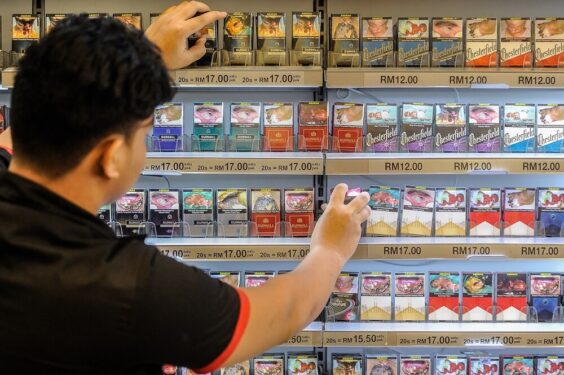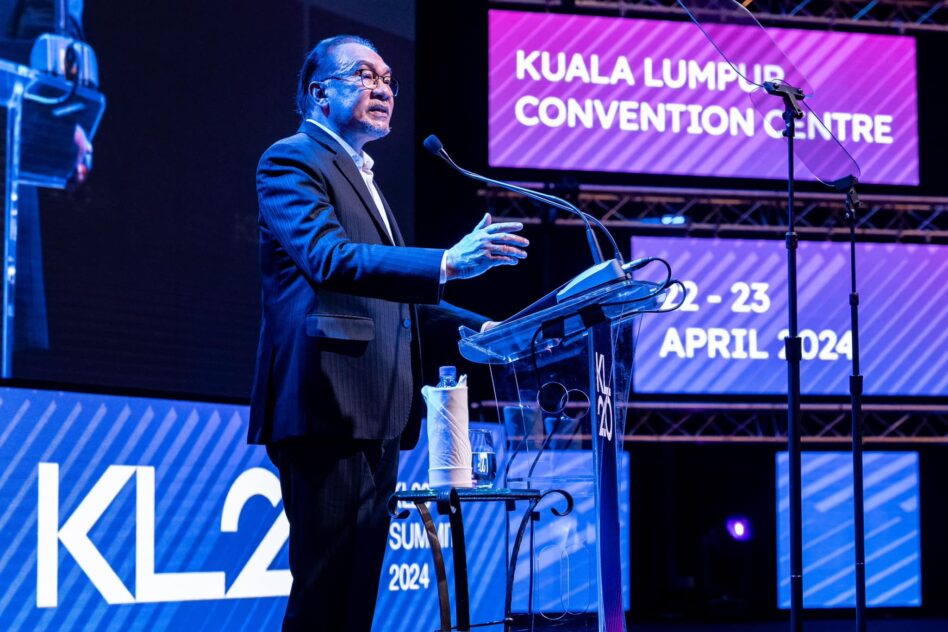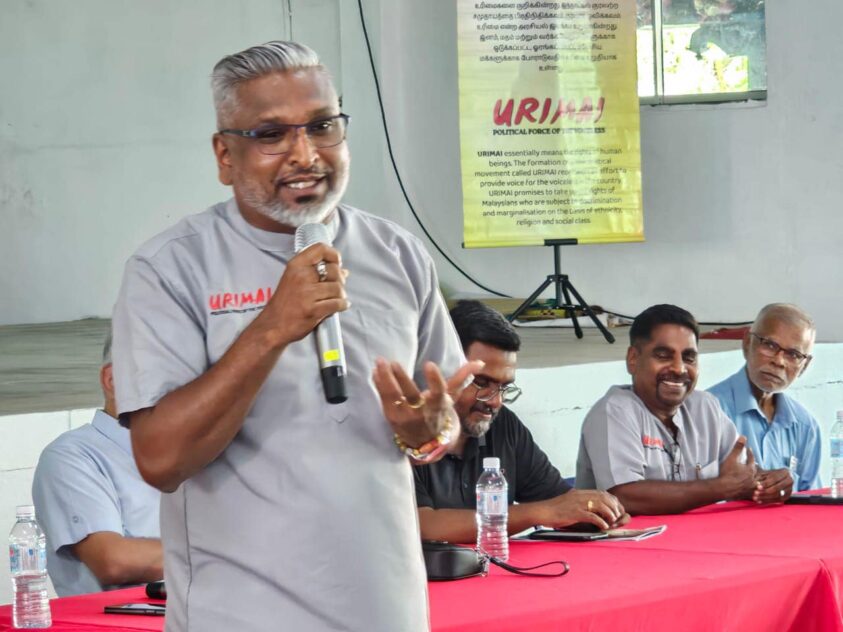By R Thillainathan
OF the RM250 bil in the recent government stimulus package, about 10% consists of one-off cash transfers, mostly to the needy, 40% takes the form of a six-month relief from debt servicing, 22% consists of a guarantee scheme to enable businesses – both small and big – to borrow to meet cash flow problems, a staggering 20% to stimulate spending by employees by encouraging them to tap into their forced savings with retirement funds or providing relief to employers from making their statutory contributions to the Employees Provident Fund (EPF) and to the Human Resources Development Fund (HRDF).
It is unclear what the balance consists of. A very small part is capital expenditure and allocations to a food guarantee fund and an East Malaysian multi-purpose fund, though the bulk of the rest may consist of capital expenditure by government-linked companies or GLCs.
Though the cash transfers are one-off (excluding the three-month wage subsidy), they form 6% of the package. The obvious concern is that, given the state of government finances and the likely collapse in its tax revenues from the big fall in oil prices, sales revenue and incomes, the government will be hard pressed to continue with its income support programme if the crisis is a prolonged one.
That being the case, such income support should be more targeted at the really needy, and it is my considered view that there is no case for those who are still in employment to be eligible for such support, unless the wage is below subsistence level. The question is how to ensure as many are employed, which is a matter I take up later.
The RM100 bil moratorium on debt servicing (which is 40% of the package) is targeted at individuals and small and medium enterprises (SMEs). It certainly provides relief to the SMEs affected by the supply disruptions and collapsing demand (for many goods and services).
Other businesses also require such support. I am concerned that if the crisis is a prolonged one, debtors and lenders of businesses, which are and were certainly viable before the outbreak of the crisis, have no choice but to come out with even more radical arrangements to share the burden to save these businesses before the firms are pushed into bankruptcy or vulture funds make a swoop to take them over at substantially written-down value of their shares and debts. Such sacrifices to save viable businesses also have to fall on the shoulders of other key stakeholders such as employees and landlords, as I stress elsewhere.
I commend the government on the launch of a RM55 bil guarantee scheme (representing 22% of the total RM250 bil package) to enable businesses, which are or were viable, small or big, to borrow under the scheme, to meet overhead expenses (of up to RM20 mil against a 80% guarantee on the sum borrowed) to tide them over the crisis. Of this, a RM5 bil guarantee scheme is targeted specifically at SMEs facing difficulties getting loans, with the guarantee rate to be increased from 70%-80% of the sum borrowed.
Here too it is important to ensure that the SMEs are essentially viable. I would again submit that the government is only one of the stakeholders. It has come out bravely to provide viable businesses a lifeline to enable them to survive the crisis by guaranteeing them to borrow to meet overhead expenses in the face of supply disruptions and collapsing demand.
But we have to gear up for the worst-case scenario of a crisis which drags on for 18 months. So all stakeholders will have to come forward to share in the burden of saving their businesses in an equitable manner by taking a temporary cut in their dividends, salaries (except for the low-income earners), landlords and lenders. If not, the guarantee provided by the government will be a total waste and will only add to the future burden of the people and the country.
Apart from these guarantee facilities, the government is also supporting SMEs and micro-businesses by increasing its allocation by RM2 bil (to RM5 bil) to The Special Relief Facility, by RM1 bil (to RM6.8 bil) to the “Kemudahan Semua Sektor Ekonomi” and by RM500 mil (to RM700 mil) to the Micro Credit Scheme.
We have noted at the outset that a staggering 20% of the government’s total package is to stimulate spending by employees by encouraging them to tap into their forced savings with retirement funds or providing relief to employers from making their statutory contributions to the EPF and HRDF.
Under the package, the government expects (from available data in the public domain) the additional spending from a drawdown of forced savings and from a temporary 4% reduction in an employee’s contribution rate to the EPF, to amount to RM40 bil (which dwarfs the government’s own stimulus measures made up of cash transfers which only amounts to about RM15 bil). The relief provided of what may amount to a “moratorium” (and not necessarily a waiver) on the statutory contribution of employers to the EPF or HRDF, is expected to be RM10 bil.
One will be hard put to question a moratorium or even a waiver of an employer’s statutory contributions, if that is a less painful form of a wage cut. This is especially so if the crisis is a prolonged one and more sacrifice is required from all stakeholders including the employees.
With respect to employees being encouraged to provide a stimulus to the economy from their spending from a drawdown of their forced savings, I am of the considered view that this is not appropriate, as these accumulated savings are to fund them in retirement or meet their big-ticket expenditures on housing, education or health.
Such a withdrawal is only justified in the case of a contributor who becomes jobless (given that the government has been terribly slow in providing a safety net against unemployment or against handicaps, despite the calls for one from the days of the Asian financial crisis) or is required to take a cut in pay to save his job and his company, and he needs to draw on his forced savings to meet his household’s basic needs. More generally, I am of the view that a better way to provide the stimulus is for the government to borrow from the likes of EPF to fund such stimulus programmes.
There appears to be a reference in the RM250 bil package for stepped up investments by the GLCs though no details are available. So long as the spending by the GLCs are on maintenance and capital expenditures and are aimed more at stimulating demand for locally produced goods and services and in generating productive jobs, there is no reason to question such expenditures.
Given the severity of the crisis, there must be a bi-partisan approach to dealing with it. Both the prime minister and the Pakatan Harapan opposition have started on the right note in launching and welcoming this unprecedented intervention to address the crisis.
As the challenge before us is a monumental one and as there is a need for all stakeholders to come forward and work together to share the burden of dealing with the crisis in an equitable manner, the sooner a national consensus is forged to address and overcome the challenge, the more successful we will be in grappling with and overcoming the crisis, even if it drags on for 18 months or even beyond.
Concluding remarks and the way forward
The crisis we are facing, probably the worst since the great depression, is one caused by supply shocks, which in turn is triggering a shortfall in aggregate demand. A macro stimulus programme is a necessary but not sufficient condition to get ourselves out of the crisis. As the supply shocks can drive even viable businesses into bankruptcy, especially if the crisis drags on for 18 months, we have no choice but to combine a strong stimulus programme with a programme where all stakeholders come together to share in the burden of coping with and overcoming the crisis in an equitable manner thereby saving viable businesses and jobs from being lost.
If we as stakeholders don’t appreciate the need for cooperation to survive and overcome the crisis, we are only giving an opportunity for the likes of vulture funds to swoop down on us to take over our businesses at bargain prices. And at the same time forcing us to take cuts in our pay and rent, to come out of the crisis.
In tackling the crisis we are facing now, we cannot rely on an indefinite lockdown to solve the crisis. The case for a lockdown is to arrest the spread of the virus such that infections from the pandemic do not overwhelm our health system and resources.
In fighting the pandemic we also need essential supplies of masks, sanitisers, ventilators and such. It is surprising that, though the world has faced this deadly disease for a little over three months, we still do not have an adequate supply of these vital goods to keep ourselves from being infected or from infecting others and from being cured. This must be remedied immediately and the supplies should be made available at fair prices, so that all, including the poor, can afford them.
Even when the lockdown has been lifted, life cannot return to normalcy. The lockdown would have brought under control the spread of the virus, but we may still be exposed to the risk of infection until we are all vaccinated against the virus. We have to still continue to wear masks, use sanitisers and keep our social distances to minimise the possibility of a resurgence in the infection (or where necessary even to re-impose a lockdown if it can be justified on health and economic grounds).
This requires that the supplies of the essentials, including test kits to test, trace and monitor infected patients, are in ample supply. We can then replace the lockdown in containing the pandemic, to the use of the testing and tracing method, as well as use of face masks and practice of good hygiene to achieve the same goals that South Korea and the Czech Republic are accomplishing.
Social distancing can be practised by still putting restrictions on public gatherings. And in work places, it will be best to deploy our work force in different premises, improve logistics and increase our reliance on ICT to conduct transactions, to take or make deliveries and even conduct meetings so as to minimise face-to-face contact. – April 1, 2020
Dr R Thillainathan is past president of the Malaysian Economic Association










